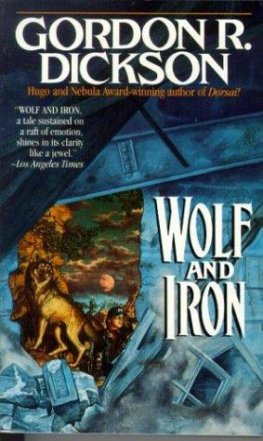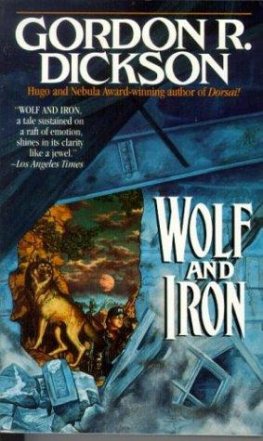Mignon Eberhart - Wolf in Man’s Clothing
Here you can read online Mignon Eberhart - Wolf in Man’s Clothing full text of the book (entire story) in english for free. Download pdf and epub, get meaning, cover and reviews about this ebook. genre: Detective and thriller. Description of the work, (preface) as well as reviews are available. Best literature library LitArk.com created for fans of good reading and offers a wide selection of genres:
Romance novel
Science fiction
Adventure
Detective
Science
History
Home and family
Prose
Art
Politics
Computer
Non-fiction
Religion
Business
Children
Humor
Choose a favorite category and find really read worthwhile books. Enjoy immersion in the world of imagination, feel the emotions of the characters or learn something new for yourself, make an fascinating discovery.

- Book:Wolf in Man’s Clothing
- Author:
- Genre:
- Rating:5 / 5
- Favourites:Add to favourites
- Your mark:
- 100
- 1
- 2
- 3
- 4
- 5
Wolf in Man’s Clothing: summary, description and annotation
We offer to read an annotation, description, summary or preface (depends on what the author of the book "Wolf in Man’s Clothing" wrote himself). If you haven't found the necessary information about the book — write in the comments, we will try to find it.
Wolf in Man’s Clothing — read online for free the complete book (whole text) full work
Below is the text of the book, divided by pages. System saving the place of the last page read, allows you to conveniently read the book "Wolf in Man’s Clothing" online for free, without having to search again every time where you left off. Put a bookmark, and you can go to the page where you finished reading at any time.
Font size:
Interval:
Bookmark:

Mignon G. Eberhart
Wolf in Mans Clothing
A book in the Sarah Keate series, 1942
INTRODUCTION
Carl D. Brandt
BRANDT & BRANDT HAS been fortunate in representing Mignon Eberhart since 1933 and since I was not born until 1935, this brief introduction will have more to do with her working life than her personality. I do know from family pictures that Mignon spent weekends at our house near Clinton, New Jersey, when I was very young, but my childhood memories of her are vague. The image that remains is of a smallish woman with a well-controlled head of red-blond hair who had a surprisingly deep voice and a truly infectious giggle. She and my father loved telling stories, the longer and shaggier the better, and while most of them were far over my head, the joy and good humor were wonderful to be near.
In 1945 we moved to New York and I saw less of Mignon. We no longer had those weekends, and in any case I was busy with school and jobs for the next dozen years. When I did come into the office in the beginning of 1957, shortly before my fathers death, Mignon was working with my mother, who remained as her agent until she herself died in 1984. Now she works with my able colleague, Charles Schlessiger, and while there is no new prose with which to work, there is still a great deal of interest in reprints both in the United States and abroad. Besides, Mignons wonderful characters are sure to appeal to the many producers who are competing to successfully fill the ever growing hours on the ever growing number of television channels. Shell keep us busy, which is the way she has always wanted it to be.
There is one facet to Mignons professional life about which I have seen little written, and that has to do with the role of magazines. They were of great importance to her and of even greater importance to many other writers. I believe that the disappearance of so many of the great magazines that were published in the thirties and forties and early fifties has had a disastrous effect on writing in this country, particularly on the writing of fiction. Ill get back to that, but first want to briefly describe Mignons magazine career.
In 1933 she sold a novelette to Redbook for $2500, three short stories to Tower for $225, and another short story to Delineator for $700. In 1934 the Delineator bought one story for $700, and then commissioned six more, four at that price and two at $800. That same year, the Ladies Home Journal bought first serial rights to The House on the Roof for $7500. Remember, these are Depression dollars.
After 1934 there was a lively competition for serial rights in the novels between the Journal, Colliers, and the Saturday Evening Post, then a weekly. Her price rose rapidly, and while not every novel went to the magazines, a high proportion did. By 1939 she was getting $15,000, and that rose to $22,500 at the end of World War II. During this period she continued to write short stories and novelettes and she could count on a minimum of $35,000 a year after 1935 from magazines alone.
The money was, of course, welcome. But there was also the training in her profession that she received from a series of highly skilled editors who worked closely with her to ensure that what appeared was the result of her best efforts. In addition, the magazines allowed her to experiment with different ideas and styles, and paid her for doing so. She could write a story in the present tense, or the first person, and find out whether that style was comfortable and workable for one of the novels. She didnt have to run the risk of losing a half years work to learn that something was not going to work in longer form and she was paid to learn it.
By the mid-fifties many of those magazines had folded, or had changed format or frequency. The American, Womans Home Companion, and Colliers joined the Delineator, Bluebook, and many others in the magazine graveyard. The Saturday Evening Post was to become a monthly, and the surviving magazines have continued to cut or even eliminate the amount of fiction they run. By the sixties, Mignons first serial sales were limited to the Chicago Tribune Syndicate, which eventually phased out its fiction in the seventies.
Mignon was gifted, and the magazines played an important role in her life. She would have been a successful writer of mysteries without them, but they provided her with public recognition, money, and a graduate classroom.
It is the last two of these elements that I miss the most in the current scene. Where are writers going to learn their trade? It is vitally important for young writers to be professional in their work, and that means being paid for what they do while having to satisfy skilled, hardheaded, and patient editors. Book publishing cannot do that at the learning stage, and I find it hard to believe that teaching creative writing at an early age is an educational or broadening experience.
All of this seems distant from Wolf in Mans Clothing. But reading it is the whole point, and Mignon would be the first to say that it should speak for itself. She has always been the complete professional, demanding of herself, and generously concerned with the fate of her fellow writers.
Cast of Characters
NURSE SARAH KEATE, who, so far as the author knows, has been knitting for five years.
DRUE CABLE, a young nurse, once married to
CRAIG BRENT, son of
CONRAD BRENT, now married to
ALEXIA SENOUR BRENT, whose brother is
NICKY SENOUR.
Also
PETER HUBER, staying at the Brent house
DR. and MAUD CHIVERY, also friends of the Brents
and
assorted police, state troopers, and domestics, including ANNA HAUB, a maid; and BEEVENS, a butler.
There is a cat, but he did not do the murder.
1
ANNA HAUB OPENED THE door, and at the same time, for me, opened the door upon murder. Naturally, I didnt know that and take to my heels.
Her solid figure was a sharp black and white against the baroque richness and color of the hall behind her. She wore a white cap, as crisp and fresh as her apron. Her face was round and shone; her light straight hair was drawn tightly backward. But what I really saw was the look of frightened recognition in her china-blue eyes. She was not looking at me; she had given me the barest glance. She was looking at Drue, who came with me.
I said, We are expected, intending to explain that we, Drue Cable and I, were the nurses Dr. Chivery had sent for, but I didnt, for I had to follow the maids look and I turned to Drue who stood beside me. As I turned, Drue took her hand from her mouth and said on a queer shaken breath, Anna! Oh, Anna, how is he?
That-and the look in Annas eyes-were my first indication that Drue Cable had ever seen or heard of the Brent family in her life. She had been extraordinarily silent and a little pale in the train that February morning; she had been extraordinarily determined that the second nurse (for they had sent for two) should be me, Sarah Keate; but she had not, that morning or ever, so much as mentioned the name of the Brents or the town of Balifold in the Berkshires-and I knew her extremely well.
Neither Drue nor the maid looked at me. Drues words seemed to give Anna a kind of confirmation that she had, bewilderedly, needed. She dropped an old-fashioned curtsy which billowed her full black skirt around her solid ankles. The look of fright, however, sharpened in her eyes, and she looked over her shoulder, backward into the depths of the house, and said in a low and distressed voice, Oh, Miss! Oh, Madam, you oughtnt to have come here.
Next pageFont size:
Interval:
Bookmark:
Similar books «Wolf in Man’s Clothing»
Look at similar books to Wolf in Man’s Clothing. We have selected literature similar in name and meaning in the hope of providing readers with more options to find new, interesting, not yet read works.
Discussion, reviews of the book Wolf in Man’s Clothing and just readers' own opinions. Leave your comments, write what you think about the work, its meaning or the main characters. Specify what exactly you liked and what you didn't like, and why you think so.









